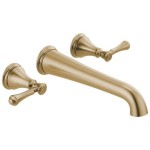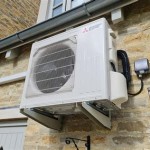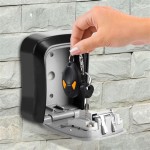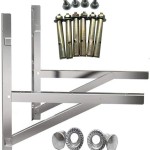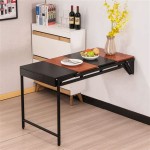Wall Mounted Gas Heaters with Thermostats: A Comprehensive Guide
Wall-mounted gas heaters offer an efficient and space-saving solution for supplemental or primary heating in various settings. Coupled with a thermostat, these units provide precise temperature control and enhanced energy savings. This article explores the key features, benefits, installation considerations, and safety aspects of wall-mounted gas heaters equipped with thermostats.
Types of Wall-Mounted Gas Heaters
Several types of wall-mounted gas heaters are available, each with its own advantages and disadvantages. These include:
Unvented Heaters: These heaters are typically smaller and less expensive. They release combustion byproducts directly into the room and are best suited for well-ventilated areas. Due to potential indoor air quality concerns, unvented heaters are often restricted by local building codes.
Vented Heaters: Vented heaters utilize a vent pipe to exhaust combustion byproducts outdoors, ensuring better indoor air quality. They are generally safer and more suitable for bedrooms and other occupied spaces. Direct vent heaters draw combustion air from outside and vent exhaust gases outdoors. Power vent heaters use a fan to assist in venting.
Flued Heaters: These heaters utilize a flue connected to a chimney system to expel exhaust gases. Flued heaters are a common choice for replacing older wall heaters that use an existing chimney.
Benefits of Wall-Mounted Gas Heaters with Thermostats
Wall-mounted gas heaters offer several advantages over other heating systems:
Space-Saving Design: These heaters free up valuable floor space, making them ideal for smaller rooms or areas where floor space is limited.
Zoned Heating: Wall-mounted heaters allow for targeted heating of specific rooms or zones, eliminating the need to heat the entire house, which can result in significant energy savings.
Efficient Heating: Gas heaters generally offer higher heating efficiency compared to electric heaters, resulting in lower operating costs.
Thermostatic Control: Integration with a thermostat provides precise temperature control, maintaining consistent comfort levels and further enhancing energy efficiency.
Rapid Heating: Gas heaters can quickly heat a space, providing near-instant warmth when needed.
Thermostat Options for Wall-Mounted Gas Heaters
Several thermostat options can be used with wall-mounted gas heaters:
Millivolt Thermostats: These thermostats operate using a thermocouple, generating a small electrical current to control the gas valve. They are simple, reliable, and do not require external power.
Low-Voltage Thermostats: These thermostats require a low-voltage power source and offer more advanced features, such as programmable schedules and remote control capabilities.
Smart Thermostats: These thermostats connect to Wi-Fi and offer advanced features like remote access, learning capabilities, and integration with other smart home devices.
Installation Considerations
Proper installation is crucial for the safe and efficient operation of wall-mounted gas heaters. Professional installation by a qualified technician is highly recommended. Key installation considerations include:
Gas Line Connection: Ensuring a proper and leak-free connection to the gas supply line is essential.
Venting Requirements: Vented heaters require proper venting to the outdoors, following local building codes and manufacturer specifications. Clearances from combustible materials must be adhered to.
Electrical Connections: For heaters with electronic ignition or power venting, proper electrical connections are necessary.
Placement: Heaters should be placed strategically to maximize heat distribution and avoid obstructions. Consideration should be given to furniture placement and air circulation.
Safety Considerations
While wall-mounted gas heaters offer many benefits, safety should always be a primary concern. Key safety considerations include:
Carbon Monoxide Detectors: Installing carbon monoxide detectors in areas with gas heaters is crucial to detect any potential leaks and prevent carbon monoxide poisoning.
Regular Maintenance: Regular maintenance, including cleaning and inspection, is essential to ensure safe and efficient operation. This includes checking for gas leaks and ensuring proper ventilation.
Clearance from Combustibles: Maintaining adequate clearance between the heater and any combustible materials, such as curtains, furniture, and paper, is essential to prevent fire hazards.
Proper Ventilation: Adequate ventilation is crucial, especially for unvented heaters, to prevent the buildup of combustion byproducts.
Choosing the Right Wall-Mounted Gas Heater
Selecting the right wall-mounted gas heater depends on several factors, including the size of the space to be heated, the type of venting required, and the desired features. Consulting with a qualified heating professional can help determine the best option for individual needs and ensure proper installation and operation.
In Direct Vent Thermostatic Wall Mounted Heater W Window 11 000 Bt Tinyhouseessentials
Dru Fire
In Direct Vent Thermostatic Wall Mounted Heater 20 000 Btu Tinyhouseessentials
Master Forge 30000 Btu Wall Mount Indoor Natural Gas Or Liquid Propane Vent Free Convection Heater Bf30dmf At Com
Procom 10 000 Btu Natural Gas Ventless Infrared Plaque Heater With Base Feet T Stat Control 171249
Dyna Glo 20 94 In Natural Gas Vent Free Infrared Wall Mounted Heater 700 Sq Ft 18 000 Btu At Tractor Supply Co
Gas Wall Heaters With Thermostat 2025 Www Alhudapk Com
Master Forge 30000 Btu Wall Mount Indoor Natural Gas Or Liquid Propane Vent Free Radiant Heater Ir30dmf At Com
In Direct Vent Thermostatic Wall Mounted Heater 8 000 Btu Tinyhouseessentials
12k Btu Comfort Glow 2 Plaque Infrared Ventless Gas Wall Heater Kwd216 Ingrams Water Air

